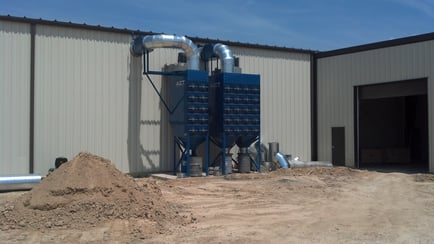 Choosing the right industrial dust collector is an important long-term decision. Not only do dust collectors clear the air, but they also improve employee efficiency, increase employee retention, help ensure a safe working environment and reduce equipment maintenance costs. This means that keeping your facility clean can be good for your bottom line.
Choosing the right industrial dust collector is an important long-term decision. Not only do dust collectors clear the air, but they also improve employee efficiency, increase employee retention, help ensure a safe working environment and reduce equipment maintenance costs. This means that keeping your facility clean can be good for your bottom line.
Dust collector price is often top of mind when selecting a dust collector, but there is so much more to the selection process.
In this blog, we’ll discuss the factors you should consider when it comes time to buy an industrial dust collector in order to select a system that works effectively to clear the air.
What Is Your Application?
To determine the best industrial dust collector, the application is the most important thing to consider. The application that dust is being collected off of helps to determine what type of dust collection system is needed. Certain applications require a baghouse dust collector, whereas other applications require a cartridge dust collector.
Cartridge dust collectors are typically very good for fine dust and lighter loading applications such as welding, plasma, laser and other fume or smoke applications. Cartridge collectors operate efficiently down to .3 microns. Pharmaceutical dust would be an example of an application where a cartridge collector would be suitable because of the tiny size of the microns being collected.
Baghouses are the most effective when the particulate is larger and the loading is extreme. Baghouse efficiencies are closer to 5 microns. Baghouse fabric bags have a longer service life cycle than cartridge filters and can handle a more demanding application with a heavier dust such as wood and grain dust.
Typically, a woodworking application would require a baghouse dust collector because larger dust particles are produced, and baghouses perform more efficiently than cartridge collectors for larger particles. Compared to a welding application with smoke and fume, a cartridge dust collector is a better option as the particulate being collected is smaller.
Types of Dust
There are many types of dust, but the properties of the dust need to be considered. Moisture level, texture and size of the dust will directly factor into what type of industrial dust collector can collect the dust from the application most effectively.
Fine, powdery and dry dust is typically best collected using a cartridge-type dust collector. The cartridge-style filter can easily capture this type of dust on the pleats. Because it is fine and dry, the pulse clean system can efficiently clean the filters, helping the dust collector to run efficiently.
Baghouse dust collectors are often used on sticky and oily dust types. These dust types are better collected on the long tubular shape type of filters that are in baghouses rather than the canister type filter in a cartridge dust collector.
The Size of the Dust Collector
Before you buy an industrial dust collector, you have to know what size of dust collector you need. The first thing to help determine this is if you are going to use ambient type dust collection or source capture dust collection. Ambient collection is when you’re cleaning the general shop air, whereas source capture is when you’re picking up the particulate at the point of pollution.
What Is the Rate Dust Is Being Produced?
To have a properly sized dust collector, there are a few factors to study that help allude to the rate at which dust is being produced within a given area. The cubic feet of space that dust is being collected from directly affects the size of the industrial dust collector needed. It’s also important to consider the number of machines that are producing the dust and if those machines are being run on multiple shifts.
Location of the Dust Collector
Where is your industrial dust collector going to be? Determining where to put the dust collector is based on numerous considerations such as foundation type, height restrictions and floor space. Certain requirements that have to be met when placing a dust collector.
Indoors or Outdoors
Dust collection systems can be placed indoors or outdoors. Putting the dust collector indoors can be ruled out quickly if there is not enough space or if there’s going to be employees near the system where the noise level will be too high. Installing a dust collector outdoors may not be an option if the building is leased and the landlord does not want penetrations in the building for ducting. The climate also directly affects whether a dust collector can be placed outdoors. This is a case-by-case scenario as all circumstances have to be considered.
Installation Requirements
Before you buy an industrial dust collector, be sure to consider what it will take to install the system. It is of utmost importance to ensure that there is the correct power to the system at the right voltage. Most dust collection systems come with a pulse clean system that requires clean, dry compressed air, which is a requirement for installation.
The ductwork design and layout should be planned and budgeted for before selecting a dust collection system. It can affect numerous features that you choose when selecting the dust collector.
Get Started
A.C.T. Dust Collectors offers solutions for all dust collection needs, and our expert-level team will walk you through purchasing an industrial dust collector for your specific application. Contact us today or watch the webinar below to learn more.


























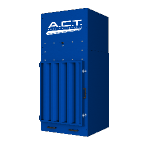
%20Collectors%20Image.png?width=143&height=143&name=ADC%20(Ambient)%20Collectors%20Image.png)
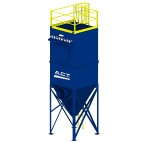

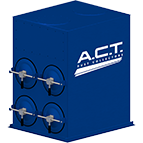
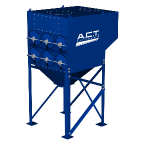
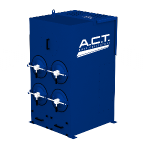


















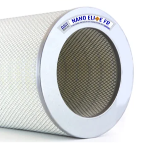


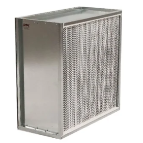

.png?width=240&height=91&name=ACT%20Dust%20Collectors%20Logo%20Solid%20White%202020%20(1).png)
.png?width=148&height=149&name=usa-manufactured-dust-collectors%20(1).png)